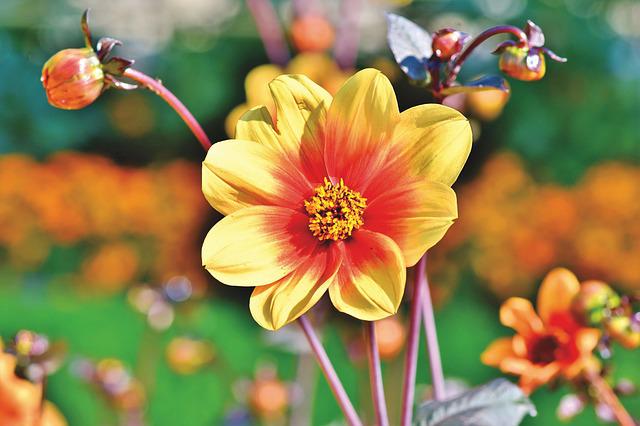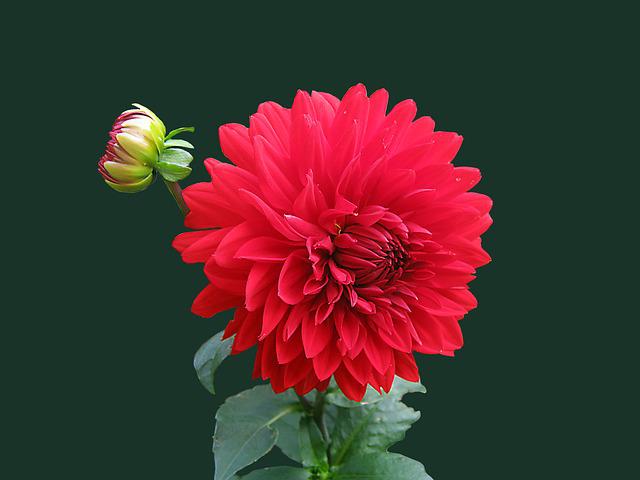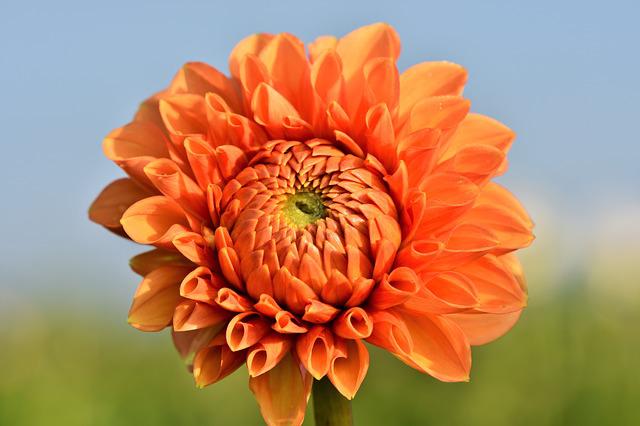Dahlia Growing Zone: Planting Dahlia in Different Climates

Dahlias are one of the most versatile plants, able to adapt to a wide range of climates. They can be grown indoors or outdoors in warm and cold climates. In this article, we’ll explain how to plant dahlias in different climates, and give tips on how to care for them, so they thrive. So let’s dive into much deeper learning on the growing zones of dahlia. Read on!
Table of Contents
Dahlia Growing Zone
There is a good chance that if you are an avid gardener, you are aware of the gardening zone that you reside in. If you don’t already know, now is the time to educate yourself.
Keep in mind that the lower the number of the zone in which you are located in North America, the colder the area.
In the more temperate parts of North America, dahlia plants are classified as an endangered species of perennial plants. However, they can survive the winter in Zones 8 through 11. In Zone 8, dahlias can be grown as annuals.
We will have a later, more in-depth discussion about whether tubers should be dug up before winter or left in the ground over the growing season. However, if you live in Zones 2 to 7, you can either dig them up or treat them as annuals that will die back over the winter and start growing again in the spring.
Dahlias are not well suited for extremely hot climates, such as those found in Texas and southern Florida, despite thriving in moderately warm weather. However, there is still reason for optimism because there are variants that can withstand high temperatures.
Be aware that dahlias require approximately six to eight hours of direct sunlight per day to produce the maximum number of blooms, regardless of where you are. Additionally, it is best to wait until the soil has warmed up before planting them so they can thrive.
Mexico’s climate varies from region to region. Dahlias were first cultivated there in Central America. But if you think that learning about the weather in Mexico will help you figure out the best environment for growing dahlias, you couldn’t be more wrong about that.
The Koppen climate classification, recognized on a global scale, distinguishes between five distinct climate types: tropical, dry, temperate, continental, and polar. The classification is made more accurate by the presence of many subcategories.
The climate in Mexico varies greatly from region to region due to the country’s geographical configuration, which includes temperate and tropical zones. These range from conditions that are desert-like and semi-desert-like to conditions that are subtropical and humid and Mediterranean in type.
You can experience all climate types in this region, except the polar. But that isn’t going to be much help to you in cultivating dahlias, is it?
Dahlias were first discovered in the mountainous regions of Mexico, where they were considered a weed. The seeds of these beautiful plants were brought to Spain by the explorers who first discovered them.
There are at least 36 different species of dahlias in existence today, each with tens of thousands of different cultivars. Because most plants thrive in warm weather and are killed by frost, you should be aware of when the last frost occurs in your region.
Dahlia Planting in Various Climates

The Weather of the Tropics
Temperatures that average at least 18 degrees Celsius (64.4 degrees Fahrenheit) are characteristic of tropical climates. They also receive a significant amount of rainfall.
If you live in an area that experiences hot and humid summers, you won’t be able to successfully cultivate dahlia plants there. Instead, wait until later in the summer and autumn to plant them.
Dry Climate
A lack of rainfall characterizes dry climates, but temperature also plays an important role. For instance, there are desert climates that are both hot and cold and semi-arid climates that can be either hot or cold.
No matter what kind of dry climate you live in, irrigation will be just as important as the right time to plant your crops.
Temperate Climate
In the coldest month, the average temperature in temperate climates is approximately 0°C (32°F). However, the amount of rainfall is highly unpredictable, and there are nine distinct subcategories of climate type.
When planting dahlia tubers, it is probably safe to assume that late spring or early summer will be a good time to do so.
Continental Climate
Temperatures in continental climatic regions are comparable to those found in temperate regions, but there is a significant increase in precipitation.
Because this climate type contains 12 different subcategories, it shouldn’t be a surprise that most states in the United States have at least some regions that are influenced by a continental climate.
Climate in the Arctic
In this region, the average temperature is consistently below 10°C (50°F). It’s probably safe to say that late spring or early summer is a good time to plant dahlia tubers.
What is the Lowest Temperature a Dahlia Can Tolerate?
A mild freeze of 32°F won’t harm the tubers but will kill the foliage on dahlias. The foliage and tubers will perish in a hard freeze (28°F). The tubers should be stored over the winter at a temperature of 45–50°F for best health.

